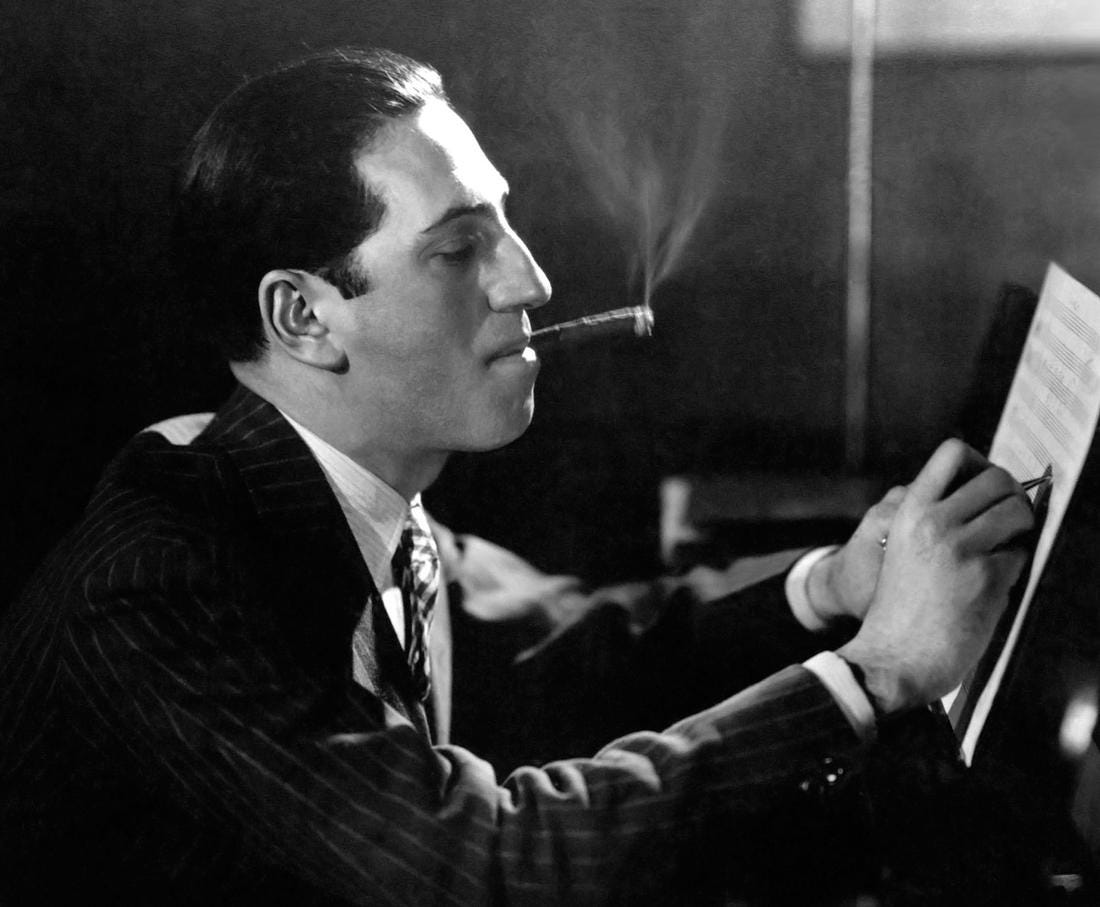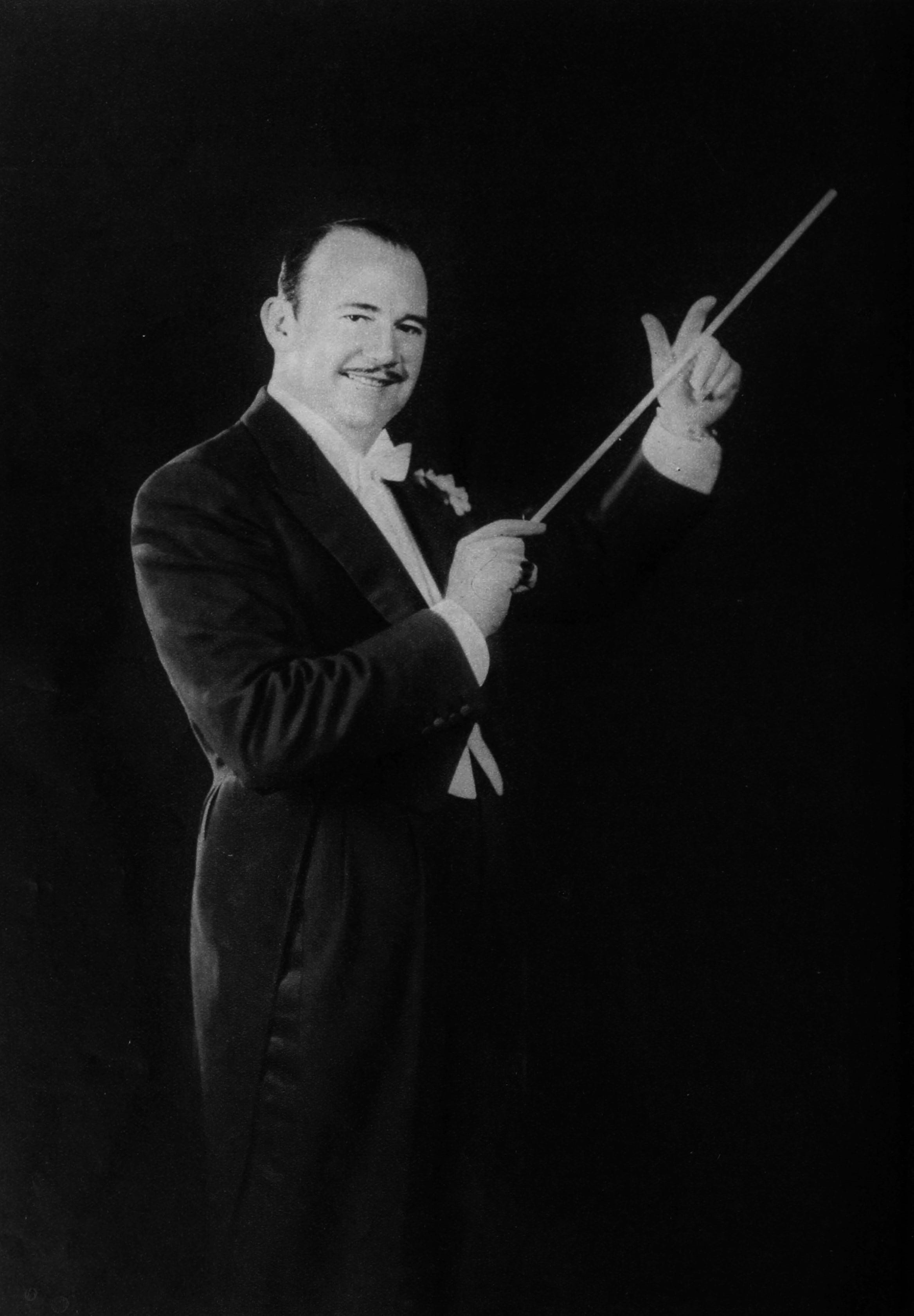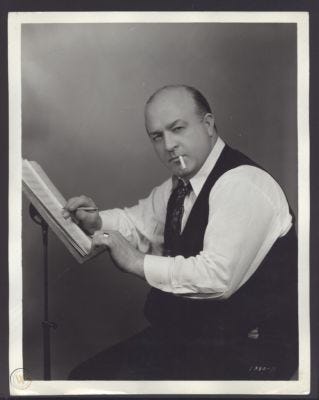
We love Gershwin’s Rhapsody in Blue, from Leonard Bernstein’s many traversals of the piece, including his famous recording from when he was music director of the New York Philharmonic (and my first recording),
and this extraordinary live performance in 1976,
and his final recording, which he made with the Los Angeles Philharmonic,
to André Previn’s classic recording with the London Symphony Orchestra in 1970.
However, there are five versions, all made during Gershwin’s lifetime, that are quite distinct from one another and certainly worth hearing!

Rhapsody in Blue was premiered February 12, 1924, by Paul Whiteman and his band, the Palais Royal Orchestra. The composer, Ferde Grofé, orchestrated it from Gershwin’s piano version that he just finished in the nick of time. It is scored for three woodwind players doubling on oboe, clarinet, sopranino saxophone, two soprano saxophones, two alto saxophones, one tenor saxophone, one baritone saxophone; two trumpets, two French horns, two trombones, and one tuba (doubling on double bass); a percussion section that includes a drum set, timpani, and a glockenspiel; one piano; one tenor banjo; and violins. Here’s Gershwin playing the original solo piano version that was made into a piano roll.
Gershwin also made a version for two pianos that leaves in the music that he cut out of the solo piano version.
There are very few premieres that had such an illustrious audience! Sergei Rachmaninoff, Igor Stravinsky, Fritz Kreisler, Leopold Stokowski, John Philip Sousa, and Willie “the Lion” Smith were all there, if you can believe it. The subsequent recording of Grofé’s first orchestration would, by 1927, sell a million copies, which then was practically unheard of. Here is that 1924 recording.
In 1926, Grofé would orchestrate it again for a larger ‘pit’ orchestra found in most Broadway houses at the time. He added a flute part, bassoons, and more strings and percussion.

Here is the slightly larger 1926 orchestration, again with George Gershwin as soloist.
In 1930, Paul Whiteman was the most popular artists of his day and the movie, The King of Jazz, was made to prove it. For various and fascinating reasons this film fell into obscurity until recently. It’s a story unto itself, but a cut version of the rhapsody was used in this film and it’s so over the top that you have to watch it to believe it!
In 1942, Grofé would orchestrate it for full orchestra, which is the version Bernstein, Previn, and many others would perform until 1976, when Michael Tilson Thomas would be the first to record the original jazz band version since Gershwin.
Tilson Thomas would record the original jazz band version again in 1998 with the fantastic New World Symphony, and it is the recording I always return to more than any other!
